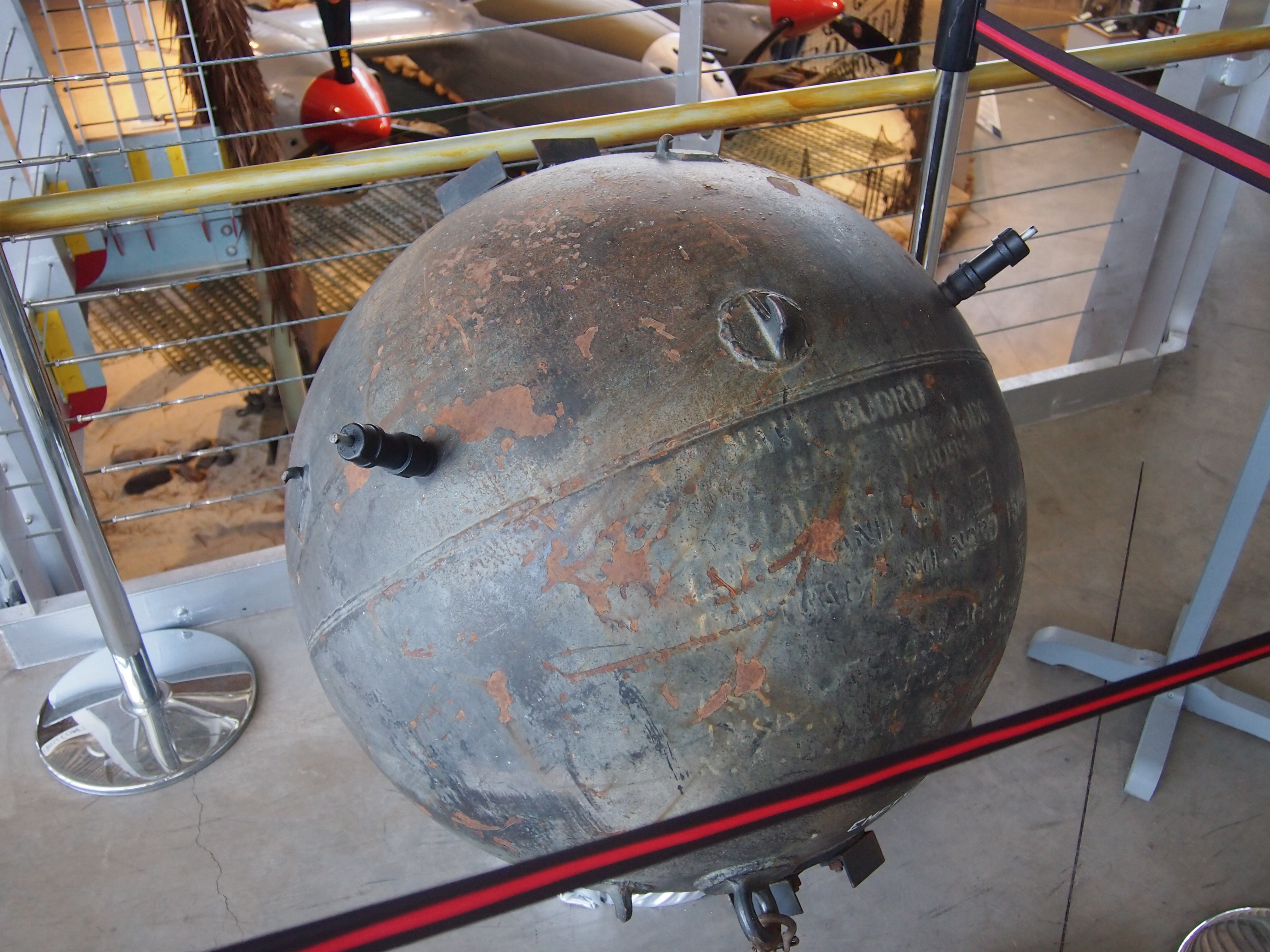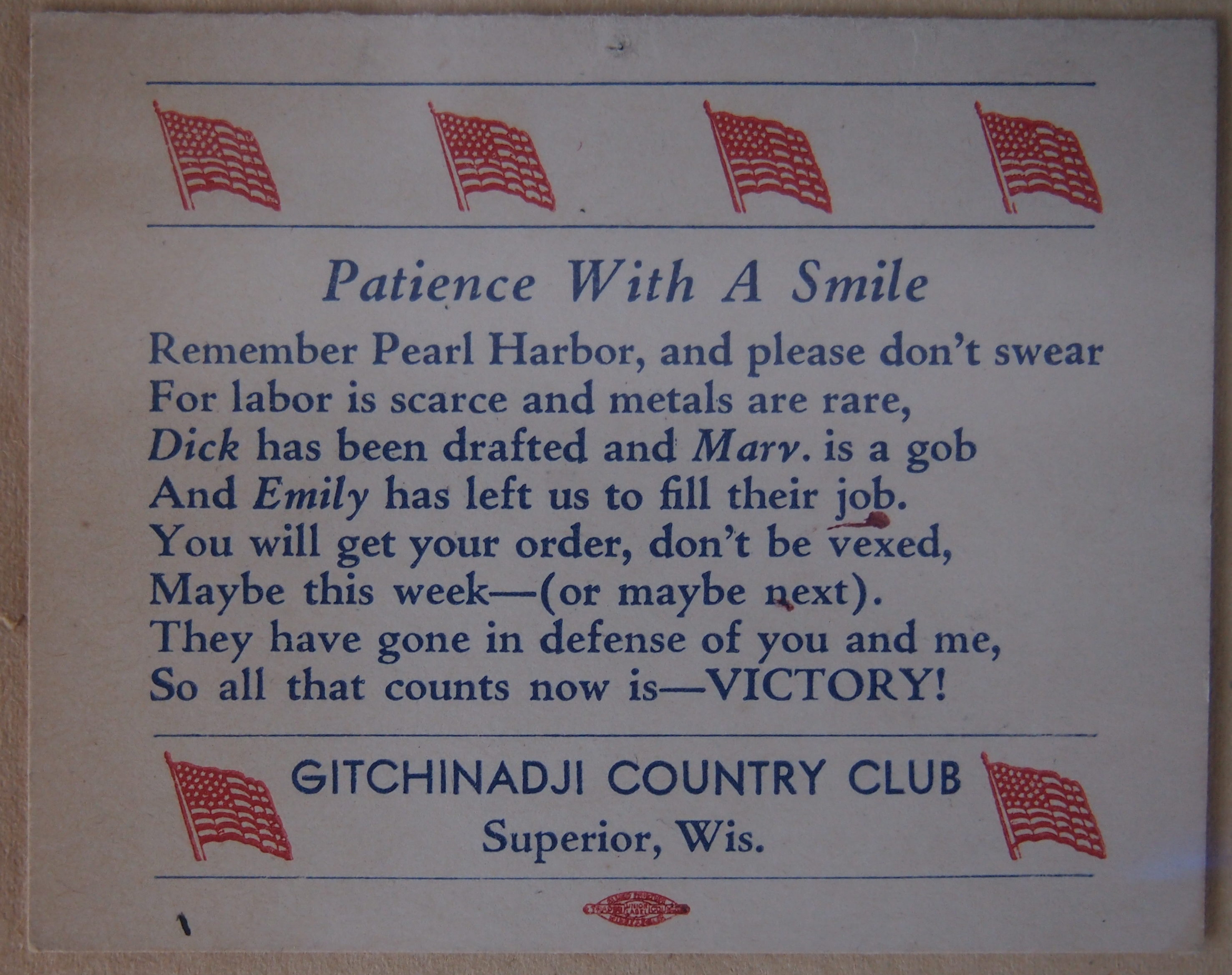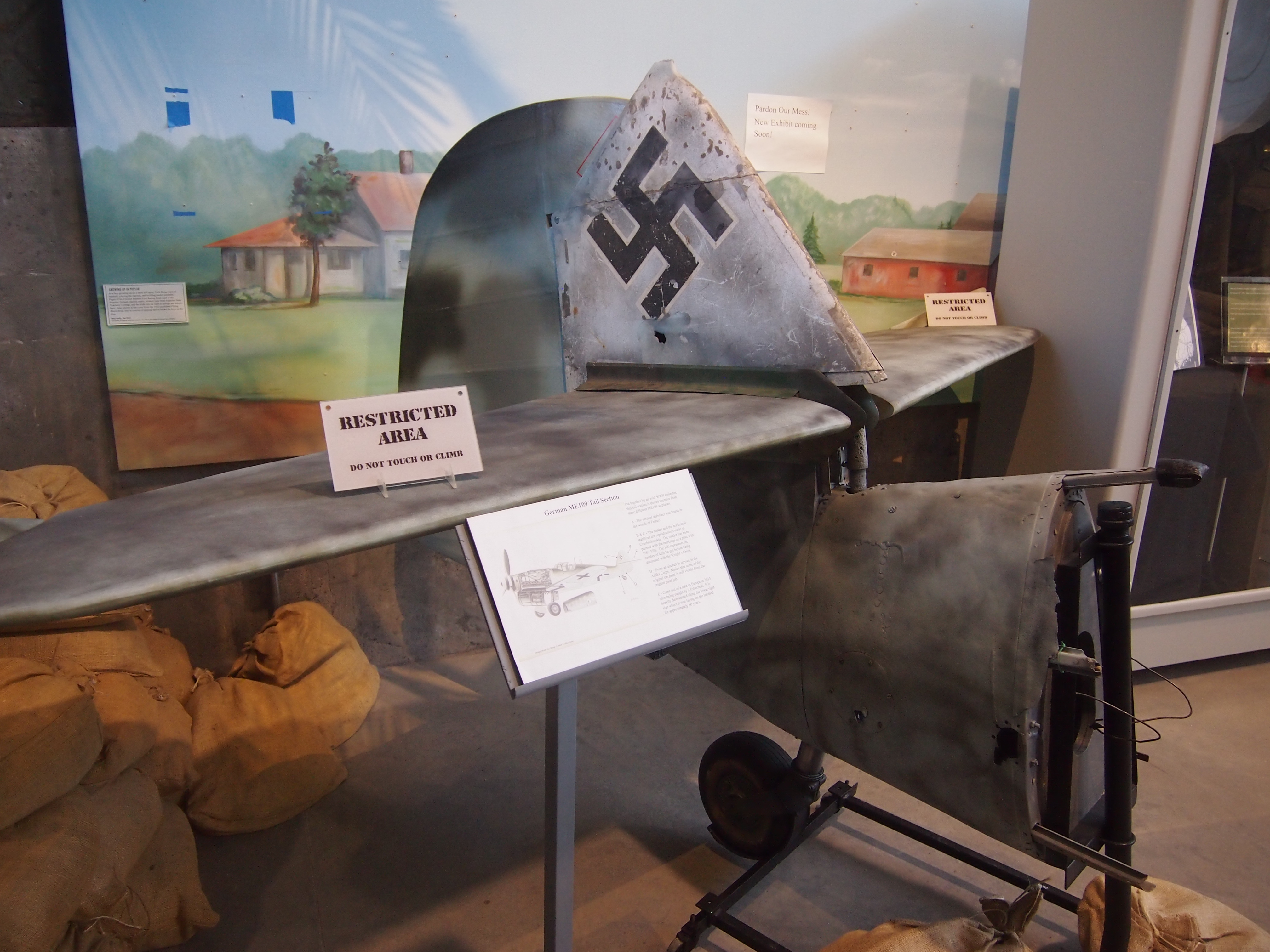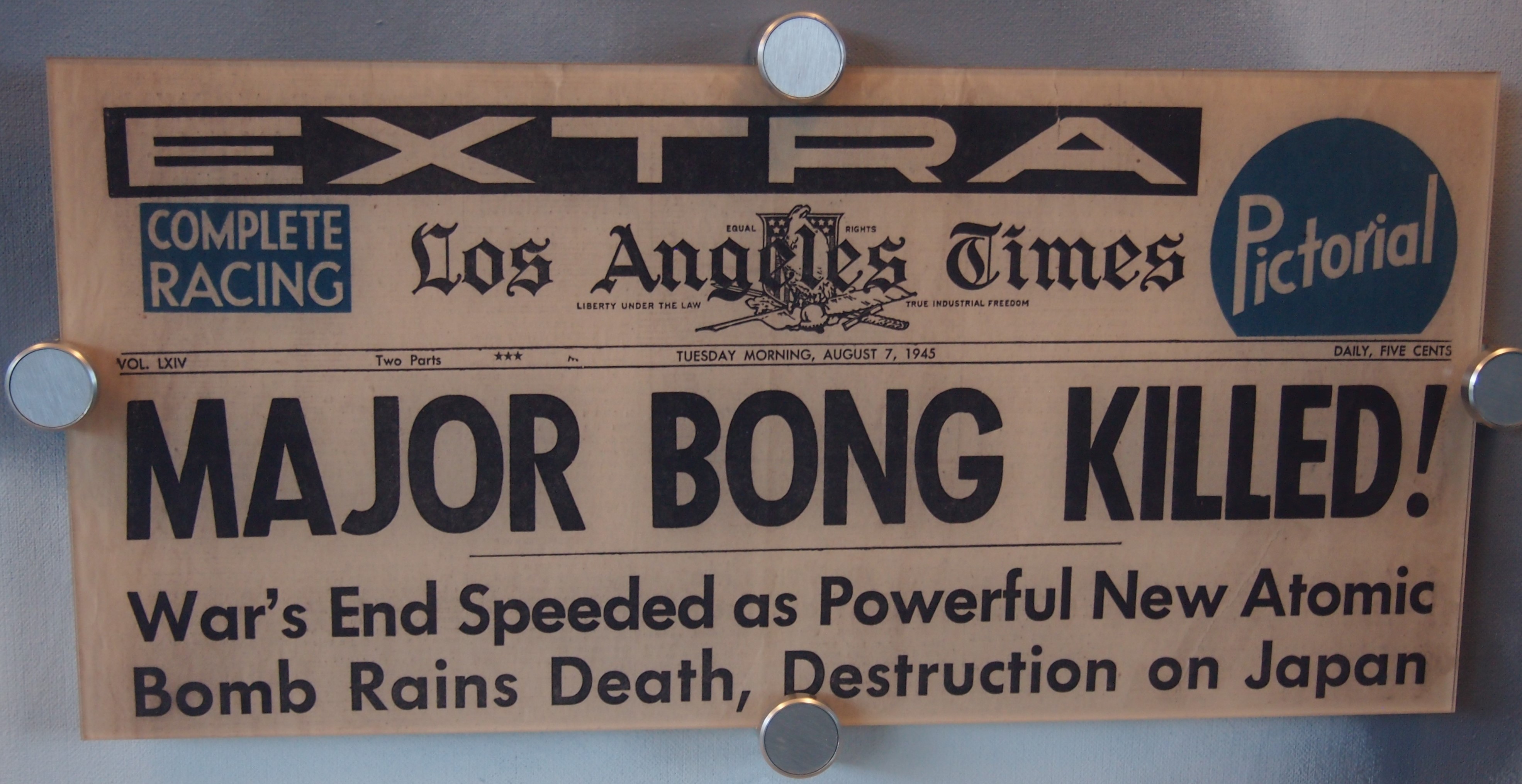On the morning of July 31, as the girls slept a little late, I drove from Duluth to Superior, Wis., via the Richard I. Bong Memorial Bridge. It’s a long, not particularly wide bridge over St. Louis Bay, in service since 1985.
Richard Ira Bong, who grew up on a farm near Superior, is credited with shooting down 40 Japanese aircraft as a fighter pilot with the U. S. Army Air Corps, and likely got other kills that weren’t credited. Driving through Superior a few days earlier, I’d noticed the Richard I. Bong Veterans Historical Center on the lake, so after crossing his namesake bridge, I made my way to the Bong Center to take a look.
It’s a small military museum with a strong Bong component, but not entirely devoted to him. Walking in, it’s hard to miss the centerpiece P-38 Lightning fighter plane, the very sort that Maj. Bong flew to such lethal effect on the enemy.
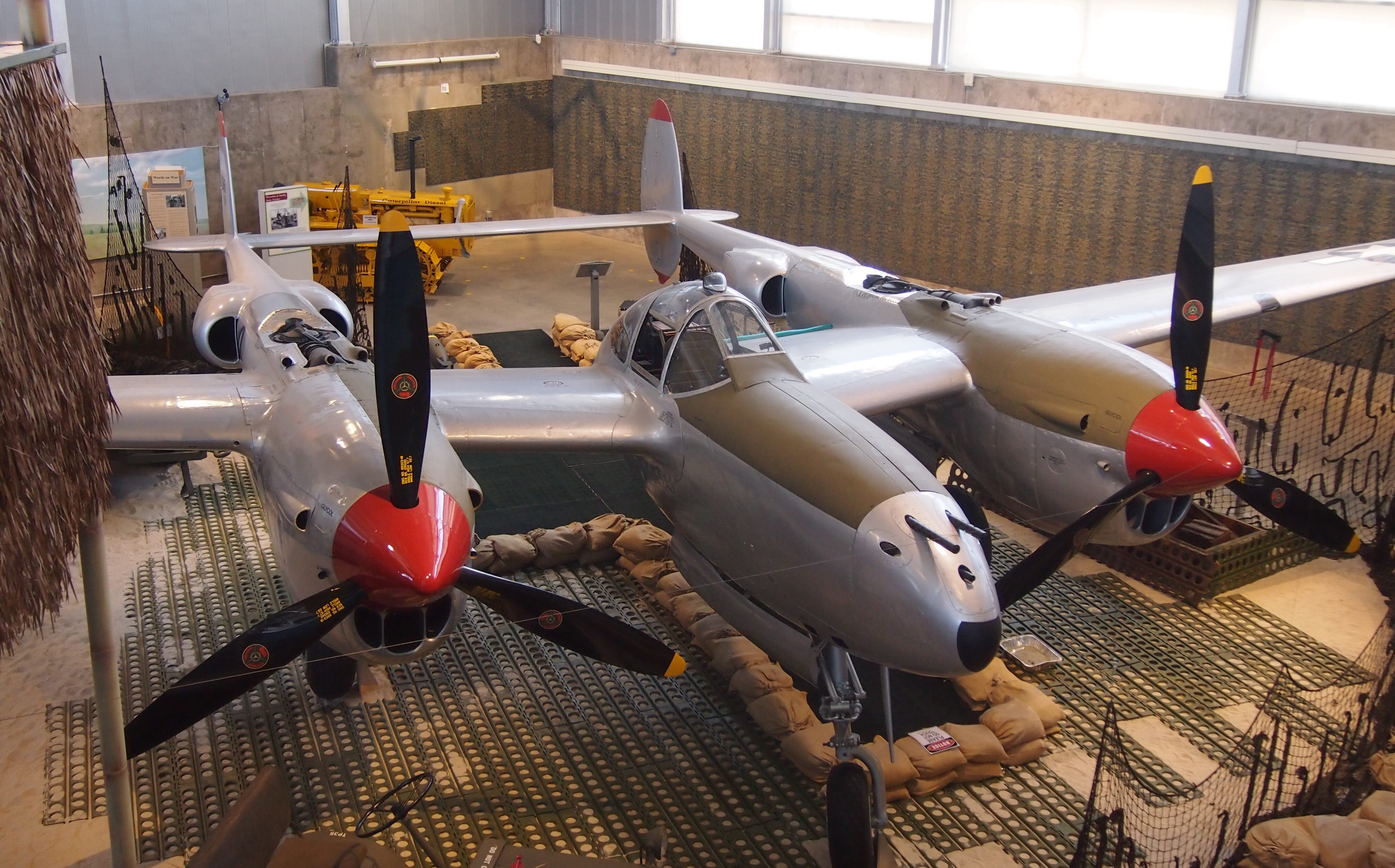 This aircraft isn’t the one Bong flew. While he was stateside, it crashed while another pilot was flying it. The Army took delivery of the one on display in July 1945, after Bong had been ordered to quit flying combat missions. The Richard I. Bong American Legion Post of Poplar, Wis., acquired the plane from the Air Force in 1949, and it was on display in that town for some decades.
This aircraft isn’t the one Bong flew. While he was stateside, it crashed while another pilot was flying it. The Army took delivery of the one on display in July 1945, after Bong had been ordered to quit flying combat missions. The Richard I. Bong American Legion Post of Poplar, Wis., acquired the plane from the Air Force in 1949, and it was on display in that town for some decades.
In the 1990s, the plane was restored to resemble Bong’s P-38J “Marge,” complete with his fiance Marge’s portrait on it.
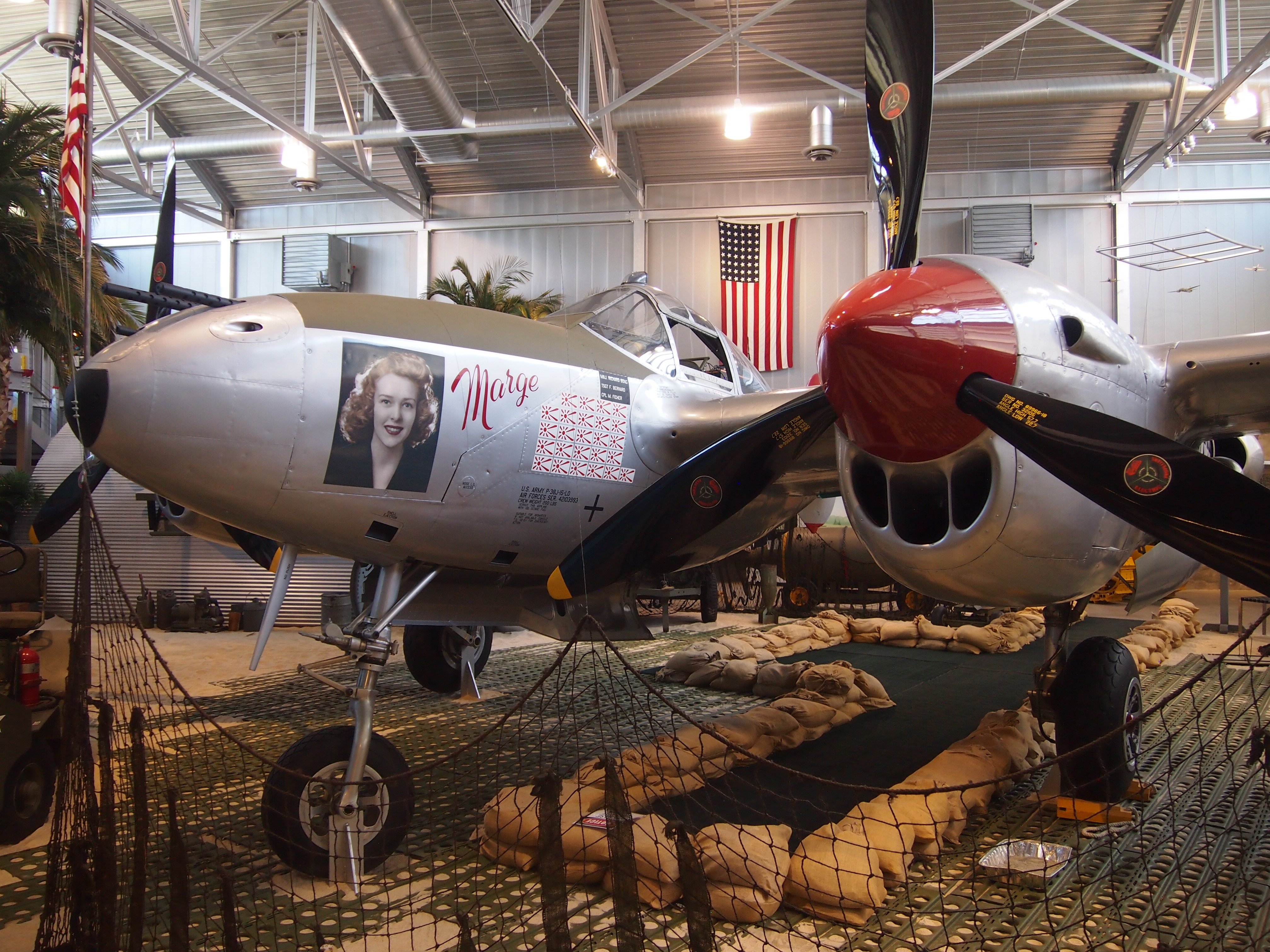 Bong’s Medal of Honor is on display.
Bong’s Medal of Honor is on display. 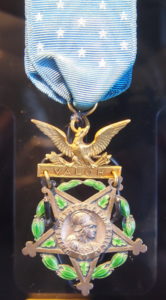 His citation says: “For conspicuous gallantry and intrepidity in action above and beyond the call of duty in the Southwest Pacific area from 10 October to 15 November 1944.
His citation says: “For conspicuous gallantry and intrepidity in action above and beyond the call of duty in the Southwest Pacific area from 10 October to 15 November 1944.
“Though assigned to duty as gunnery instructor and neither required nor expected to perform combat duty, Maj. Bong voluntarily and at his own urgent request engaged in repeated combat missions, including unusually hazardous sorties over Balikpapan, Borneo, and in the Leyte area of the Philippines. His aggressiveness and daring resulted in his shooting down 8 enemy airplanes during this period.”
As mentioned, the museum isn’t all about Bong. There’s an assortment of artifacts, such as this magnetic mine.
Some home-front ephemera.
A piece of a Messerschmitt 109.
Bong came home for good in 1945, before the war was over, and did some test piloting of jet aircraft for the Army in California. Being a test pilot turned out to be more dangerous for Bong than facing the Japanese in the Pacific.
His plane crashed in an accident on an otherwise famed date: August 6, 1945. He and Marge had only been married a short while (she died in 2003, after playing an important part in establishing the museum).
